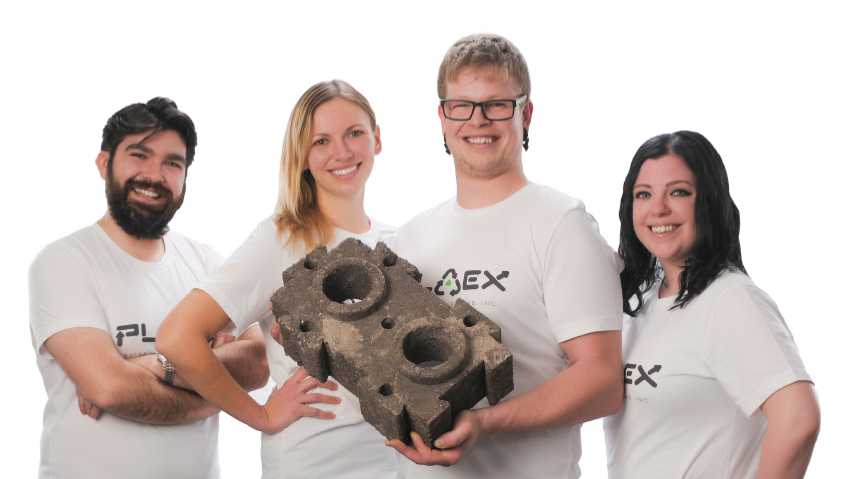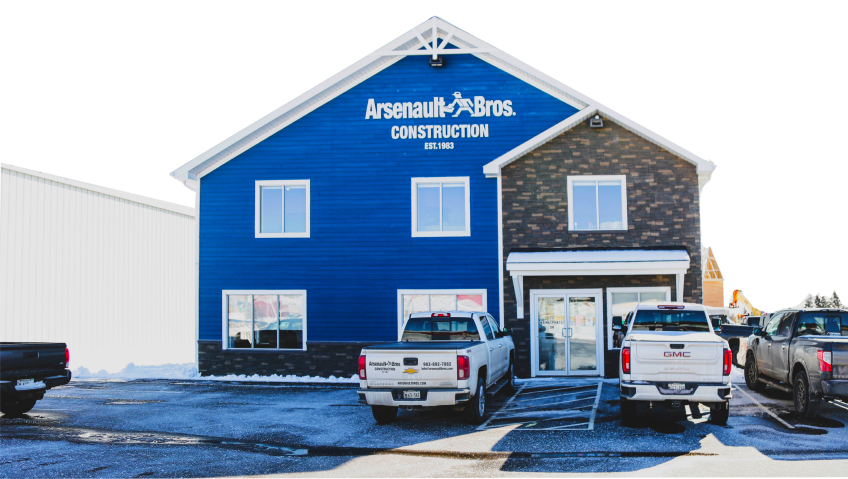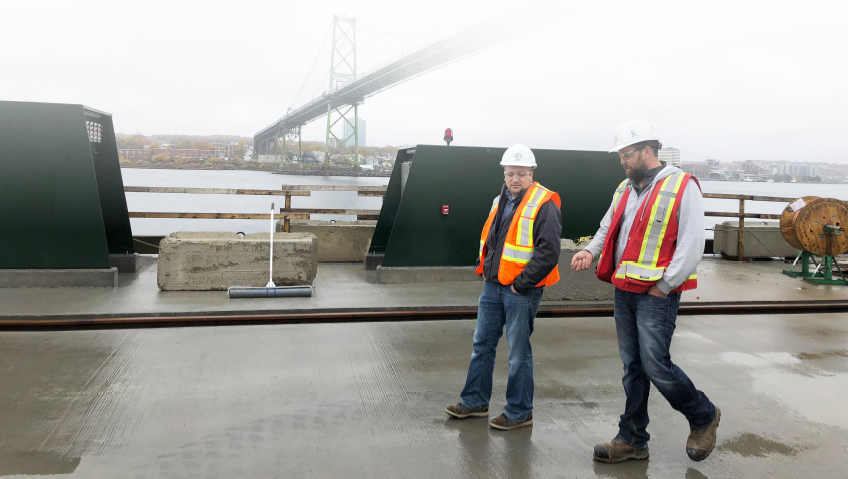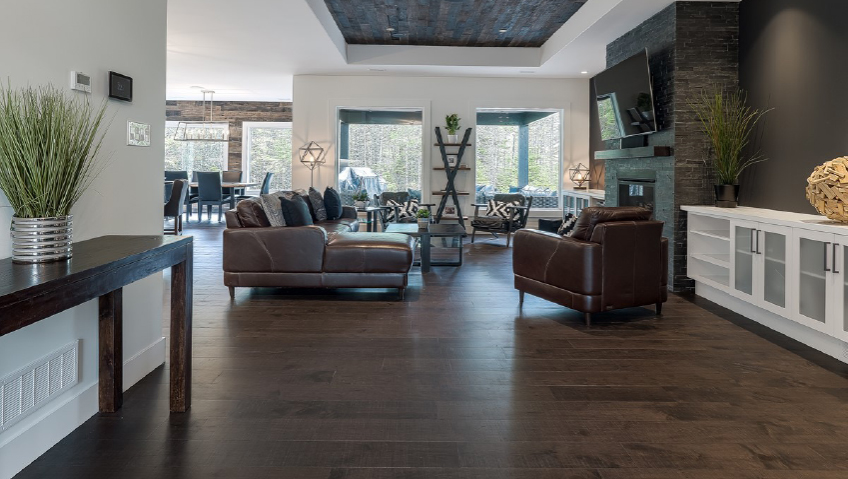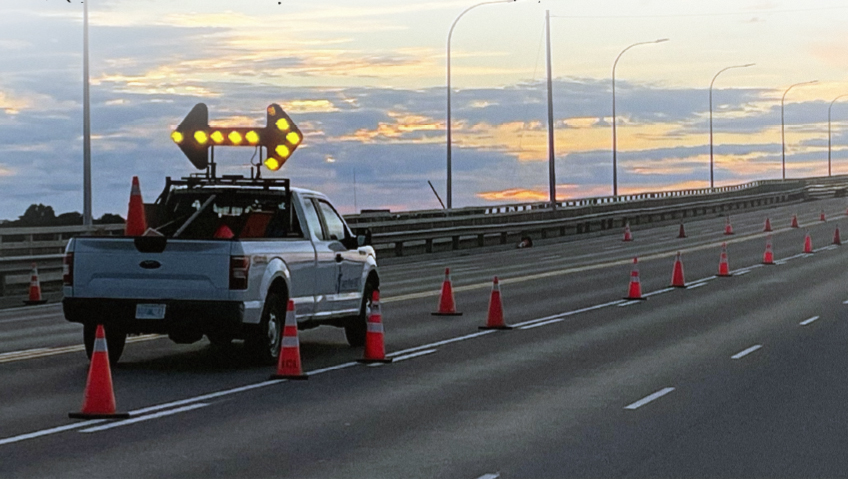For all of its positive outcomes, construction generates a large amount of waste and by-products. An estimated 2.2 billion tons of construction waste will be generated annually by 2025, according to the Construction & Demolition Recycling Association (CDRA). With a growing population, aging infrastructure, and the increasing difficulty in finding qualified construction personnel, the industry is ripe for systemic changes.
One company has a bold new future in mind for construction, helping decrease build times and costs while simultaneously repurposing plastic and construction waste. PLAEX™ (pronounced Play-X) Building Systems is looking to fundamentally change both the construction sector and plastic waste recovery in its native New Brunswick, throughout Atlantic Canada, and beyond. This rapidly-growing enterprise is moving beyond the start-up stage to bring its first proof-of-concept products to consumers across the area.
Thanks to the hard work of the team at PLAEX™, plastic waste by-products from Canada’s agricultural industry can now have a new use by becoming PLAEX’s interlocking blocks. An estimated 40,000 tons of plastic generated annually in baling wrap, greenhouse film, silage bags, twine, and more present a plentiful source from which to draw materials.
Founder and Product Developer Dustin Bowers explains that those products, along with plastic from marine applications like winter boat wraps and rope, are well-suited for PLAEX’s purpose. “Those products have stabilizers in them that are designed to give long life within a natural environment,” he says.
Bowers describes the transition from construction professional to entrepreneur. “I’ve been building houses since I could walk, really,” he says of his years with a family construction business. After working on the West Coast for several years, he returned to New Brunswick in 2017. With the birth of his first child, a natural shift in perspective followed. “One of the things that struck me, with the work we were doing, was just how much garbage we were dealing with,” he says.
PLAEX™ was born out of a desire to not only reduce this waste but repurpose it into a positive. “Twenty to thirty percent of all materials purchased for a job site end up going straight to waste, which is pretty substantial when you think about it,” Bowers says. “Just that alone can create massive savings in a project, by eliminating all the waste material.”
Thanks to Atlantic Canada’s heavy investment in entrepreneurship, the company was able to get organized quickly, with a patent filed for its proprietary composite material and products in 2019. While the company’s Brick&Panel™ system requires further testing, the material itself has been proven viable. Its compression strength has been measured at over 19 megapascals (MPa), considerably above the Canadian National Building Code’s required minimum of 15 MPa.
Bowers admits his biggest concern was the material’s ruggedness in the face of Canada’s fluctuating freeze-thaw cycle. “Our material has a 0.3 percent water absorption,” he says proudly, placing PLAEX’s metric far above concrete’s 8 to 12 percent water absorption and clay brick’s 18 percent water absorption. “We’re expecting to get that down to zero.”
The material’s composite nature means that the blocks are stable through any weather. “Due to the nature of the composite, we have very little thermal shrinkage or thermal expansion,” Bowers says. Finally, the material’s composite nature is expected to greatly expand its longevity. “We’re still in lifespan testing,” he remarks, “but we’re expecting over 100-year lifespans for all our products.”
The company is still undertaking tests on its larger Brick&Panel™ system but the company’s first product is almost ready to hit retail shelves across the region. LinX™, a line of smaller interlocking blocks, is designed for landscaping applications and will also demonstrate the company’s trademark recycled plastic composite. The LinX™ system’s components are currently available with eight sides, enabling connections at 45, 90, or 180 degrees. A twelve-sided version is currently in development, to facilitate even more precise angles for more design flexibility.
Easily bolted together and attached to a foundation, LinX™ will be able to form retaining walls, flower beds, privacy walls, playground edging, and more. The blocks also come in a variety of naturally dyed colours, which Bowers describes as intended to aesthetically match existing building materials as closely as possible. “Initially, we’re looking at a grey and brown, and potentially a red and a black product,” he says.
He and his team see LinX™ as an eco-friendly alternative to traditional materials like concrete and clay, while simultaneously giving PLAEX™ a chance for its materials to enter the market on a manageable scale. After years of testing formulas, Bowers says, it is time to go public. “We have something that gives us a very consistent product end result now, and now it’s just a matter of scaling that up,” he says. “We’re hoping to have it in retail stores in early 2023.”
While LinX™ enters the market, PLAEX™ will be able to continue testing and certifying its larger Brick&Panel™ system to get them market-ready, with numerous proof-of-concept projects in the works. “We will be building a few showcase buildings with them,” Bowers says. These include a storage shed and several retaining walls. As with LinX™, exhaustive tests will verify the bricks’ responses to fire, saltwater, and hurricane-force winds to prepare them for harsh Canadian winters.
When deemed ready—Bowers estimates a further eighteen to twenty-four months—the Brick&Panel™ system will integrate seamlessly with other building materials such as drywall and be able to incorporate electrical and plumbing infrastructure to drastically reduce assembly time. The Brick&Panel™ will also eliminate the need for exterior features such as siding, by replacing it with the fully interlocking PLAEX Panels™. Though its insulation R-value has yet to be proven through testing, it is much higher than concrete, and the PLAEX Panels™ allow for the addition of laminated insulation materials to meet any local requirements.
One future addition to the Brick&Panel™ system is the integration of PV solar panels into the PLAEX Panels™. “The solar integration will be a key step for our Brick&Panel™ system, as we move into a future focused on sustainable energy,” Bowers says. “That is really quite a simple integration with our panelling.” As PLAEX™ expands operations it will likely be possible for clients to further customize PLAEX Panels™ designs according to their needs.
PLAEX™ is also hard at work developing an in-house Builder CAD (Computer Aided Design) to help simplify and streamline project design and ordering. The PLAEX Builder CAD™ will allow designers, architects, and DIY clients to design their dream project in a virtual world with the assistance of AI (to identify and resolve structural issues), and to order directly through the software. The software will allow for auto generation of instruction booklets and structural drawings. PLAEX™ also sees a great opportunity here to leverage block-chain technology to ensure more accurate shipping logistics, helping achieve the goal of zero waste. “It is very much in Alpha mode at this point but will be a major game changer.”
As it moves beyond its seed round, the company is seeking early adopters to help prove the viability and versatility of its products. The company is also expanding its personnel ranks and is seeking like-minded employees who share PLAEX’s passion for the environment. Roles in logistics, manufacturing, engineering, equipment operation and automation, as well as bilingual sales professionals, will help the company expand nationally and internationally.
He makes it clear that the company intends to cherish its workers: “We offer all of our long-term employees equity options and have a culture of lateral information flow to remove bottlenecks and encourage innovation and reward efficiency.”
“We are in the early stages of becoming a certified B Corp and are committed to the UN’s 17 sustainability goals,” Bowers says. This certification is given by international non-profit B Lab to recognize environmental and social performance.
Once the LinX™ system has proven PLAEX’s composite formula and its bricks have entered the larger construction market, Bowers foresees changes nothing short of exponential in build-time reduction. “We’re looking at being able to do builds in a day rather than months,” he says. “Stick-frame construction has so many different parts and steps involved,” he continues. “Something like ours will be competing in speed with 3D printing.” He believes that the LinX™ and Brick&Panel™ lines will be superior to 3D printing, as they can be prefabricated offsite, require no curing time, and are easy to disassemble/modify when the homeowner inevitably wants to do a renovation, or the structure is no longer needed. “No more waste.”
Accelerating build times even further is PLAEX’s embrace of automation. “We’ve developed this whole system with automation in mind,” Bowers says. “The future of construction is autonomous.” Eventually, he hopes that the entire production line—between material collection, manufacturing, and installation—will be fully automated. To this end, the products have been designed for easy manipulation by current-generation robotics, allowing for rapid deployment and integration as the company expands.
This, Bowers explains, harkens back to a philosophy of simplification. “How we really create the efficiencies and solve the waste issues is by reducing the cost as much as we can and simplifying things,” he says. “People like things to be simple. If you want people to recycle, it has to be easy, and we’re really working hard to make that happen.”
But above all, he and his colleagues hope consumers and businesses see the massive versatility in PLAEX’s offerings, as well as their environmental advantages. “We’re excited to see what people build with them,” he says, noting that a sizeable part of the idea behind the product came from his own sense of childlike creativity. By making building materials environmentally responsible, easily assembled, and cost-effective, Bowers hopes PLAEX™ can help reinvigorate construction as a passion rather than just an industry.
“We want to make building fun again and encourage people to be creative about the things that they build,” he says. “We’re dedicated to making sustainable products that can allow people to creatively express through building.”

